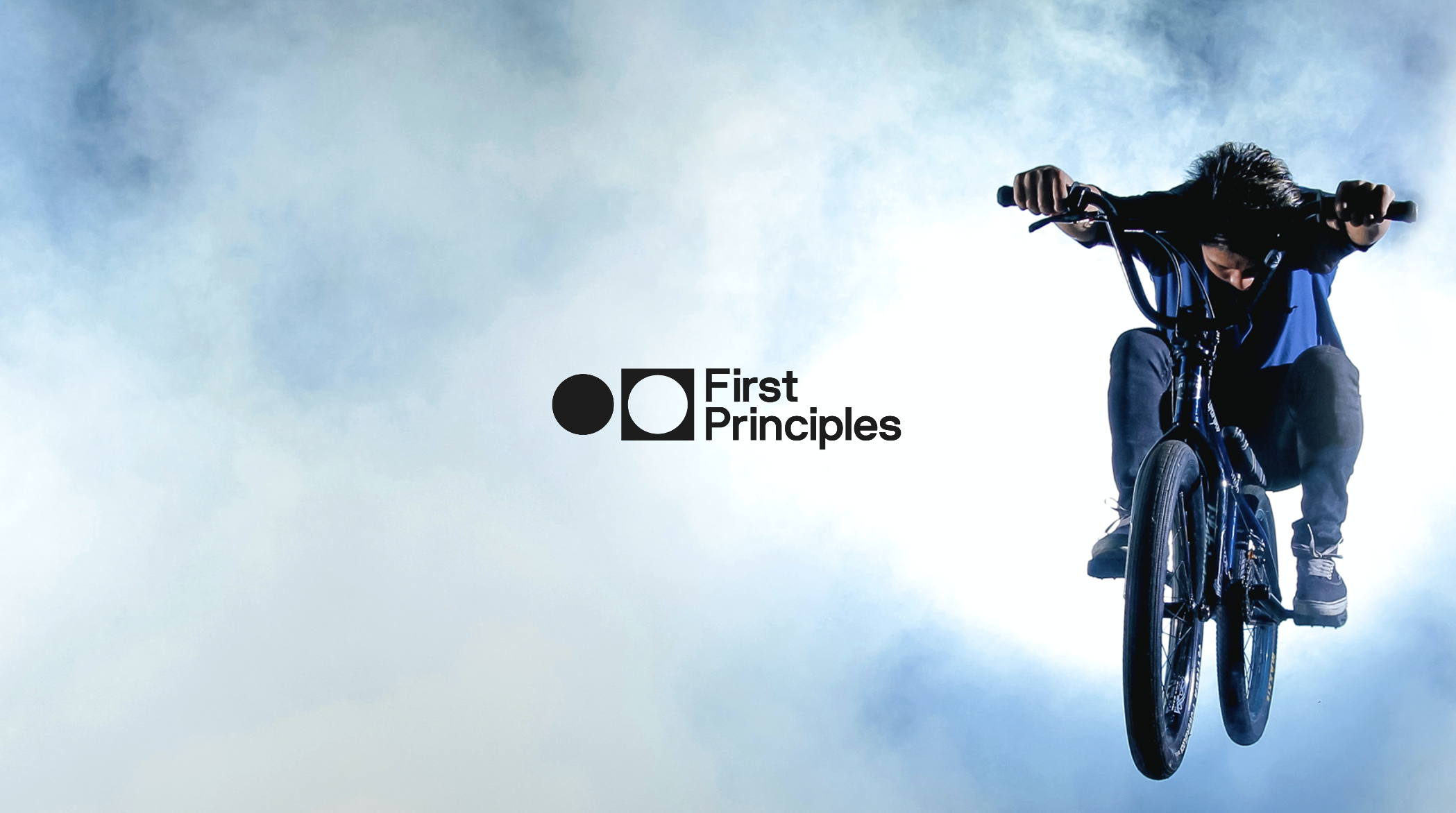Hacking IKEA: How To Use The Infiltrator Technique For Product Experimentation
“A lot of time businesses have a predefined solution in mind. And that’s often not the right solution for execution. We need to take a step back and first ask, is this fulfilling a user need? And for businesses to be able to answer that, they really need to understand who their users are, and their needs”.
You might also enjoy these articles:
Introduction
PICTURE THIS:
You’ve got a great idea for a new product. You’ve dreamt it up, worked out all the design challenges, discovered which materials work best for its construction, and designed a prototype. After all this hard work, your gut tells you that everyone’s going to love what you’ve made — but how can you know for certain?
In this article, I chat with Accenture Senior Industrial Design Manager Justin Porcano, whose insights in engineering and product design have led to collaborations with industry-leading companies such as HP, Belkin, Toyota and Teague.
In addition to his work with major international brands, Porcano is known for his creative insights when it comes to intuitive product testing — some of which have made waves by hijacking the ubiquity of other brands to demonstrate the success of never-before-seen products.
This is exactly the kind of experiment Porcano conducted with Upwell Design’s Wallhub, a tandem light-switch-wall-hook that makes better use of interior spaces by providing an intuitive place to store keys and other items. By installing the Wallhub in furniture mega-retailer IKEA’s display units, Porcano was able to gauge immediate customer interest through organic in-store interactions.
In this article we discuss:
A seed of inspiration
The experimentation plan
Going viral
Experimentation hurdles
Reflections on hacking IKEA
1. A seed of inspiration
Porcano entered a MUJI design competition, tasked with creating a home product that lived on the “peripheral” of a space. The design challenge required product designers to create something out of the way, yet vital to the operation of a modern living space. This led to the construction of the Wallhub, which Porcano says was an answer to his frustration with misplacing everyday items.
“I constantly lose my keys. My wife will be the first person to tell you that. And all of us have a pretty regimented process of looking for our keys, phones and wallets before walking out the door. I was brainstorming and looking around the room and thinking about how you could support that process.”
That’s when Porcano identified the light switch plates in his own home as under-utilised infrastructure. He challenged himself to question whether they could be upgraded to do more than just cover holes for electrical wiring.
The resulting design process involved asking a lot of questions to understand how customers would engage intuitively with something like the Wallhub in ways that were superior to a standard wall hook?
Justin started by understanding the user journey and all the interactions:
How do people get keys on and off a hook?
How do people switch a light on and off?
How does behaviour change when the room is dark?
How do people enter and leave a room?
How do people enter and exit their home?
What are the physical interactions in a room?
Understanding the user journey helped Porcano develop a product that provided both functional and aesthetic value.
That’s when the real challenge began: how would the Wallhub team go about testing the value of its design in a real-world setting with target customers?
2. The experimentation plan
Porcano’s goal in testing the Wallhub was to find a cheap and fast way to gather evidence from customers to ascertain demand for the product.
To start, the team created a Kickstarter campaign to fund pre-sales and garner additional marketing PR. In doing so, Porcano was able to secure a booth at the International Contemporary Furniture Fair in New York, where publicity and public interest in the product were high.
That got Porcano thinking: what other avenues would work well to test a product like the Wallhub?
Because of its simple design and intuitive nature, Porcano thought the Wallhub would fit right in as an IKEA product. He conjectured those customers who liked IKEA’s simple living designs would also enjoy a tandem light switch wall hook.
“It just felt like an IKEA product by way of its functionality and minimalism, said Porcano. And I thought that it’d be interesting to throw it in the store and see how people reacted. Like what’s the worst that can happen?”
3. Going viral
Together, the team dressed up as IKEA salespeople and installed Wallhubs in various display units around the store. Cameras were set up to capture footage of customers interacting with the product.
“I purchased an IKEA polo from eBay, dressed up like an IKEA employee, put a couple of Wallhubs in my backpack and just went in store pretending like I worked there,” said Porcano. “We went out and scouted it one day to understand what locations would make the most sense for product placement. There were four of us that were running around trying to be as inconspicuous as possible. The goal was to get as much audio and video insight from customers as possible in as many different locations.”
The resulting video — which has since garnered over 80,000 views on YouTube, as well as additional media and press — shows a host of consumers interacting with, reading about, and placing Wallhubs in their shopping carts.
And while Porcano expected that maybe two or three of his prototypes would be picked up by customers, the team “sold” 30 of 40 Wallhubs over the course of the two-hour experiment.
“I think we got a pretty good amount of information from the experiment. We also got a lot of great marketing traction out of it as well,” said Porcano.
In addition to the positive marketing the team received as a result of their experiment, Porcano was able to glean a host of other valuable insights, including information about consumer buying habits, packaging details and ideas about where to place the product in-store.
4. Experimentation hurdles
Despite the overall success of the experiment, Porcano says that the IKEA experiment was not without its flaws.
To begin, the nature of the experiment meant that his team wasn’t able to control for many variables — age, gender, and other market segmentation details were beyond their grasp. In fact, Porcano thinks the test might have gone poorly had they not already had a solid understanding of the type of user they expected to engage with their product.
“You can't design a test for somebody if you don't know who they are, and what their needs are. If you haven't correctly identified the target market, your tests aren't going to be that good, and results are only as valuable as the test was designed. So poorly designed tests don't mean much. No matter how good the results look.”
The lesson for brands interested in doing low-cost, fast, field experiments like these? Know your target segment inside out before attempting an experiment.
While it costs very little to engage in this kind of experimentation, it can also be a waste of time and resources to create a test that, due to poor design, provides untrustworthy results.
If you’re enjoying this article, listen to the podcast conversation on the Experimentation Masters Podcast
5. Reflections on hacking IKEA
It’s been more than fifteen years since the first Wallhub prototype was created. In that time, much has changed. For one thing, Porcano believes the process of experimentation has evolved far beyond on-the-spot field experiments such as the IKEA in-store test.
The principles behind Porcano’s experiment still stand as sound advice for anyone looking to experiment with a new product or service quickly at low-cost.
“The most important thing to ask yourself: Who is my user? And what is their journey in the experience with the thing I'm creating? Only then you can start designing an experiment that makes sense from the perspective of your user journey. And then depending on the scenario, you create a hierarchy of what you need to solve first to make that ideal experience.”
In hindsight, Porcano regrets not performing early user testing. The first Kickstarter campaign produced feedback from early adopters that the Wallhub needed to be “flippable”, catering for both left and right light switches.
It can be easy to miss user context. Nuance might not be obvious to you, but it can be a deal-breaker for your users.
Summary
Conduct fast, low-cost field experiments with your target customers to test demand for your new product or service.
Key takeaways:
Be crystal clear on your target customer and their needs
Take the time to understand your user journey and interaction points
Be creative when thinking about experimentation design
Perform user research so you don't miss out on context
Create experiments and experience prototypes so that you can quickly understand user needs and use cases for solving them.
Be empathetic - develop a deep understanding of your customers and their context.
Need help with your next experiment?
Whether you’ve never run an experiment before, or you’ve run hundreds, I’m passionate about coaching people to run more effective experiments.
Are you struggling with experimentation in any way?
Let’s talk, and I’ll help you.
References:
Before you finish...
Did you find this article helpful? Before you go, it would be great if you could help us by completing the actions below.
By joining the First Principles community, you’ll never miss an article.
Help make our longform articles stronger. It only takes a minute to complete the NPS survey for this article. Your feedback helps me make each article better.
Or share this article by simply copy and pasting the URL from your browser.



